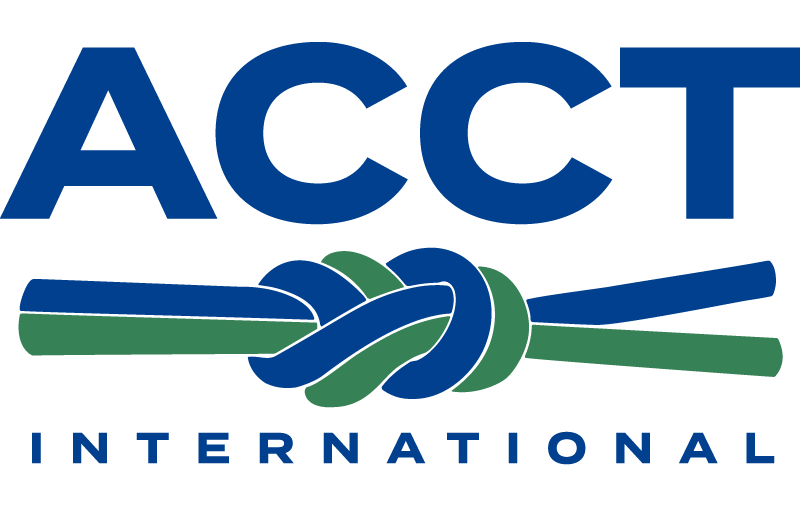Using Procedures and Incident Data to Improve Your Operation
By: Anonymous Course Manager
In this industry, things don’t always go exactly as planned. Whether it’s a participant misstep or a gear malfunction, how we handle those moments, and what we learn from them, says a lot about the strength of an operation. Like I stated in my last article, our operation has generated several ideas that have enabled us to achieve a more positive outcome, and maybe these ideas could benefit your operation as well. Keeping to my theme that the ACCT Standards can help guide our operations efforts and help us stay on top of our operations, these next three ACCT standards come into play. Having solid, site-specific procedures and a system to track and analyze incidents has made a huge difference, especially when it comes to spotting trends and making smart adjustments. Here’s how we use these standards to keep improving what we do.
What Does It Say? Site-Specific Procedures for All Activities: B.2.21: Your operation shall have written, site-specific procedures for all activities or types of activities.
How We Make It Work:
-
Write It Down, Keep It Real: When our course was commissioned, our vendor included our normal operations and limitations, operational instructions, participant safety briefing procedures, rescue procedures, operational limits, and anticipated hazards. This information should have been provided for you as well. All of this is included in our Local Operating Procedures (LOPs) and Site-specific Operating Procedures (SOPs). We use these to ensure we are adhering to our manufacturer's guidelines. We took it a step further by using this information to create a playbook for our staff to use when we run our course, serving as a step-by-step guide with pictures. We included setup, harnessing, briefings, and the operation of each activity our organization offers.
-
Make Sure It’s Accessible: We review this manual during our training, but we want our staff to be familiar with it, not just during training but throughout the season. We keep multiple copies of our playbook around the operation, such as in the office, the break area, the manager's office, and the gear shed. We place them in a brightly colored binder so they are easy to locate.
-
Update When Things Change: There are many instances when we find ways to streamline processes and be more efficient with our time. We have also observed aspects during inspections and operational reviews that prompted us to rethink our processes. We encourage our guides to submit suggestions and then review them with our manufacturer to ensure we don’t change anything we shouldn’t. When we have updated content, we hold a quick staff meeting, relay the information, and share who suggested it. This approach gives our guides more ownership of their jobs and pride in their contributions. They feel like they are making a difference.
How We Make It Work:
-
Keep It Simple and Clear: We have tried to make our incident/accident form as straightforward as possible for staff to complete while ensuring it is thorough enough to be useful later. This was reviewed with our operation’s legal representative to ensure that we record the correct information in a quick and smooth process. We have included the usual what, when, where, who, and how, and have added sections for the participant to share their experience, enabling us to effectively understand all sides of the incident.
-
It's Not A Bad Thing: We train to make sure everyone knows how and when to fill one out, even if the participant “seemed fine” or no one got hurt. This is how we identify our trends and areas for improvement in the operation. We also remind our guides that it is better to have it and not need it than to need it and not have it. Just because they are filling out the form for an incident does not always mean they did something wrong.
-
Store It Safely: Keep all documentation organized, whether digitally or in hard copy. Our Authority Having Jurisdiction (AHJ) has regulations regarding when we must report an incident to them. The way we store our records complies with their requirements, allowing us to streamline any reporting. For us, maintaining these forms is not solely about liability; it’s also about learning and identifying areas for improvement in our operations.
How We Make It Work:
-
Look for Patterns: At our operation, the leadership team reviews all incident and accident forms. We also analyze reports from the past five years to identify long-term trends. We assess whether certain elements or areas generate more incident reports. We examine trends based on the time of day, participant age, weather conditions, types of incidents requiring first aid, evacuation, and any recurring guide names. We strive to identify any trend from which we can extract information.
-
Document Your Takeaways: There have been a few times that we haven’t made changes. We write down what we saw represented in trends, and if there are any improvements from past trends. We don’t just keep reports about the negative information; we also report on the positive information.
-
Take Action When Needed: We usually make some minor changes to our operation based on trends that we find. More water stations, thicker gloves, and better access to first aid kits are just a few minor changes we have made towards improving our operation. If our data points to a problem, we try to fix it and update our procedures. Then we record what we did, so we have that historical information.
These three standards are about staying proactive. Writing strong procedures, tracking incidents, and reflecting on how that data has helped us avoid repeating mistakes. Maybe these ideas can help you do the same. Like doing good inspections, this is not just about checking a box. It’s about running an operation that evolves and improves.
